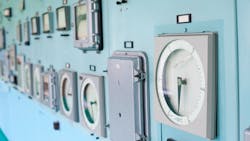Many of us have known someone like Orlando. He’s changed the oil in his 1967 Ford Fairlane faithfully every four months/5,000 miles, and he still drives it to work to this day. While he lacks anti-lock brakes, seat belts and forward-looking radar, can we dispute the reliability of his vehicle?
At the neighbor’s refinery, a few facilities had been added in the past 10 to 20 years, primarily to meet the tightening fuel regulations to remove sulfur from diesel, jet fuel and gasoline. These relatively “youthful” hydrotreaters run with few reliability problems, especially with respect to measurement and control systems. Other parts of the refinery have instruments and control systems dating back to the 1990s and before, yet even these aging installations were rarely the cause of an unforeseen upset or process interruption. Nonetheless, failures or malfunctions were unsurprisingly more common among the older generation.
Safety instrumented systems (SIS) standards incorporate a concept that equates to “useful life.” At some point, your instruments are too long-in-the-tooth to be considered “reliable” as their probability to fail dangerously (PFD) would indicate. You might be inclined to accept it. Of course, a 20-something instrument is more likely to have a component fail, which diminishes its ability to participate in mitigating a hazard. But what if the service is benign?
Like the vehicle driven only to church by an elderly lady or gentleman on Sundays, a pressure transmitter in a service like natural gas is unlikely to show excessive wear and tear. In many process plants, such instruments have remained energized via UPS power – uninterrupted – for as many decades as the process has been underway. The question becomes, can we justify expending the relatively scarce capital of the enterprise to preemptively replace such devices, after, say, 20 years?
This becomes a conundrum for our supplier community. While it would be great to get a PO for scores of 20-something-year-old transmitters, who would want to put in print that their excellent instrument from days of yore was – at some point - no longer reliable? I have found even our premier suppliers a little dodgy on the question. “Well yes, that model is obsolete, and you will have trouble getting parts for it, but there’s no reason to think it won’t function another 10 years,” they might say. No one wants to assign a “useful life” to their device, lest their competitors declare superior longevity. Logic favors the belief that the 20-something device is more likely to fail tomorrow than its recently hatched kin.
But who’s been impressed by the new refrigerator that replaced their old one from the 1990s? New devices have been in the crucible of cost reduction on all levels – from the suppliers of silicon and chip-ware to the mills that manufacture the wetted parts. A newer and leaner generation of designers and engineers are directing manufacturing. Have they been seasoned by hardships and mishaps that their now-retired mentors experienced? The fashionable and growing homages to ESG (environment, social and governance) could divert talent and focus from manufacturing excellence. Is it safe to presume the new instrument is indeed more rugged than its grandpappy?
Those employing two-out-of-three voting logic have more options to determine “useful life,” as it’s unlikely any two in such a scheme will succumb to old age simultaneously. Once one fails, it’s probably time to ensure you have specified a couple more. On the other hand, should anyone opt for “run to failure” if the device is part of a critical loop, e.g., feed to the crude furnace, or is part of a safety interlock? Is your logic configuration such that a device failure amounts to a “vote to trip,” and there are no “fail in position” or “shed mode to manual” options for a conventional loop, preemptive replacement is a less complicated choice? In these cases, we need to sit down with operations and ask, how bad a day will it be when this device malfunctions or dies? We can sleep more peacefully if we categorize each application, e.g., replace now/next opportunity, ensure a spare is on site, or run to failure.
When the 1967 Ford finally failed, Orlando found another ride to work. For the antiques in the process plant, a thoughtful team evaluation of criticality will help ensure future “bad days” are uncommon.
About the Author

Leaders relevant to this article:

